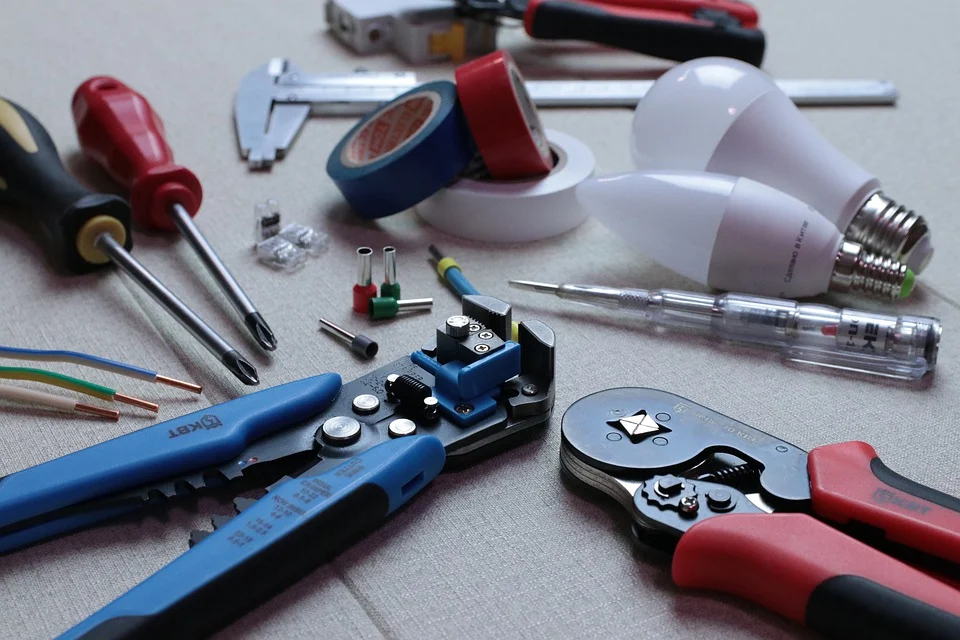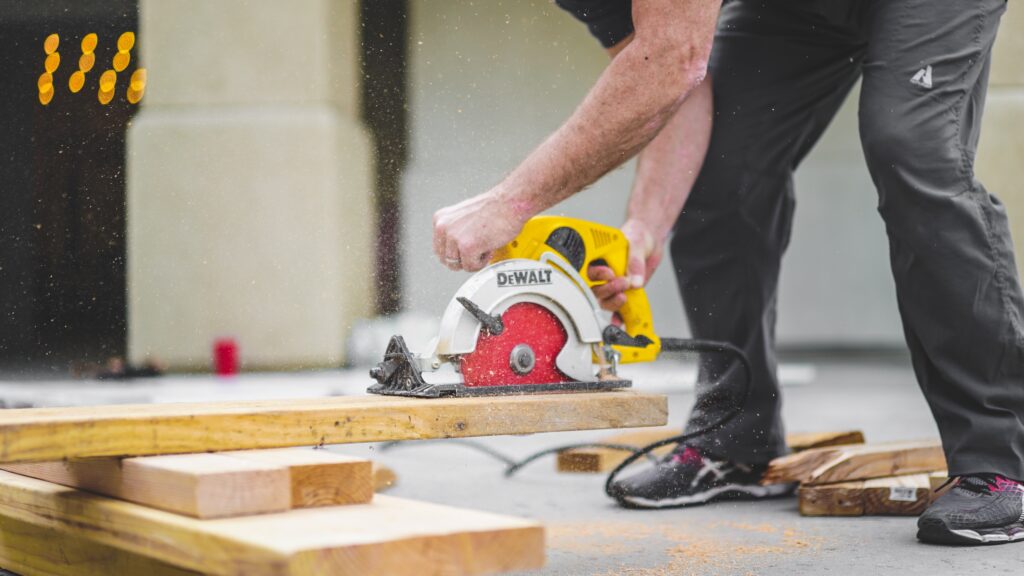DIY projects may be a fun and satisfying method to create new hobbies or interests, as well as an opportunity to master new skills and techniques. DIY can also bring a sense of success and satisfaction in a well-done task, which can be both enjoyable and motivating. Furthermore, this allows them to show creativity and customize their living area. DIY projects, such as bespoke furniture or decor, may be a great way to add distinctive touches to a house that reflect personal style and taste. This can generate a sense of uniqueness and make a living area feel more like a home.
Whether you’re working on your latest art project or have a burst pipe in the basement or a torn shoe, it helps to have an arsenal of essential supplies to complete home DIY crafts and repairs efficiently. The great thing about most of these items is that you can repurpose them for various projects, which will help keep your costs down as you build up your home improvement skillset over time. Be sure to pick up each item below the jump! The list of eight critical things will help you keep your home organized, safe, secure, and comfortable, regardless of the job’s size.
1. Quality Adhesives
There are a few basic adhesives and tools that every home craft and repair project should have on hand. Glue is essential for most projects, whether you’re using it to attach two pieces of wood or fix a broken vase. For those times when you want to be able to undo your work in case something goes wrong, there’s always duct tape! Whether you’re repairing shoes or making scrapbook pages, you’ll need some form of adhesive during your project.
A quality adhesive should be able to bond the materials you are working with securely and reliably, and should be able to withstand any stresses or strains that may be placed on the project. Additionally, the adhesive should be easy to use and apply and should dry or cure quickly to minimize the time needed for the project to be completed.
A reliable and multipurpose glue can make all the difference in household repairs like fixing lampshades or curtain hems. You can get strong bonding solutions from Loctite for more delicate arts and crafts projects like fixing broken ceramics. With so many types of adhesives available, knowing which one will work best with your project will save you time and frustration.
Many types of adhesives are available, each with its own strengths and weaknesses. Some adhesives are better suited for specific materials, such as wood or metal, while others may be more versatile and suitable for a range of materials. It is vital to select the appropriate adhesive for your specific project based on the materials being used and the requirements of the project.
2. Measuring Tools
A measuring tape is one of the essential tools for any home improvement project, whether you’re hanging a new picture or building a piece of furniture. A good quality tape measure will last you years, so it’s worth investing in a good one. A level is also essential when hanging pictures, shelves, or cabinets. No one wants wonky walls! A speed square will guide your cuts, including a circular saw, more accurately than just drawing lines on your lumber.
Tape measures, rulers, squares, levels, and protractors are common measuring instruments used in DIY projects. These tools can assist you in ensuring that your DIY project is precise and satisfies your requirements.
The combination square has many functions that are helpful in any woodworking project, including checking angles and finding the center point of an object. A set of calipers can help get accurate measurements on smaller items like dowels, drill bits, or screws. A protractor can help check corners for 90-degree angles or to check the angle at which two boards intersect.
Measuring instruments are required for precisely measuring and marking items before to cutting, piercing, or attaching them. It can be challenging to accomplish precise and consistent cuts or drill holes in the exact area without measuring equipment. This might result in wasted materials, inaccurate cuts or holes, and, ultimately, a poorly constructed product.
3. Safety Wear
Before starting any project, having the proper safety gear is essential. That includes a dust mask, helmet, and eye protection, like safety glasses or goggles, to guard against flying debris. You’ll also want gloves to protect your hands from sharp tools and materials. And finally, be sure to wear closed-toe shoes to protect from injuries if you drop something heavy on your feet. Wearing protective clothing can help prevent injuries while working at home. It will keep you safe from hazardous spillages, splinters, cuts, and more.
Wearing proper safety equipment can also help prevent accidents and injuries, resulting in medical expenditures, missed work, or even lifelong impairments. You are making a wise investment in your own health and well-being by taking the time to wear safety equipment. In addition, it can also safeguard those around you. Using a mask or respirator, for example, if you are working with materials that generate dust or fumes, can prevent such particles from dispersing and potentially injuring others in the area.
Wearing protective clothing will allow you to work longer without fearing the risk of an injury. However, remember that loose clothing and dangling jewelry can get caught in power tools and machinery. It’s, therefore, crucial to ensure you securely tuck them away, so they don’t become a dangerous hazard. Adapting safety practices is critical when carrying out DIY projects around the house. So, ensure you’re ready before you start.
Accidents can occur even if all necessary precautions are taken; however, wearing adequate safety gear can significantly minimize the risk and severity of injuries. As a result, use the required safety equipment for the DIY project you’re working on and adhere to correct safety rules to ensure a safe and successful job.
4. Power Tools
To complete most home improvement projects, you will need some tools. And while you can get by with a basic set of hand tools, some power tools will make your life much easier. Every homeowner should have essential power tools in their toolbox. First up is the drill – which is the workhorse of the shop. Many different drilling tools are available today, but an 18-volt cordless drill will do just fine for most household jobs.
Next up is a circular saw. If you’ll be cutting anything thicker than 3⁄4-inch plywood or sheet goods such as drywall or insulation boards, then this is what you’ll want to reach for instead of using a jigsaw or handsaw. A nail gun is another fun tool that allows you to drive nails into wood with ease and quickly. Cordless glue guns are great for quick repairs around the house too!
Compared to traditional hand tools, power tools can save time and labor. However, they also necessitate adequate training, care, and attention to safety. In addition to the tools mentioned above, power equipments that are commonly used for DIY projects includes:
- Jigsaws: These can be used for making curved cuts in wood and other materials.
- Sanders: These can be used for smoothing surfaces or removing material.
- Angle grinders: These can be used for cutting, grinding, and polishing metal, stone, and concrete.
5. Stable Working Surface
A stable working surface is one of the most important things you need for home DIY projects. That can be a countertop, a table, or even the floor. It’s essential to have ample enough space for your project and free of clutter so you can work efficiently. While completing DIY tasks, a firm working surface is essential. A sturdy working surface can prevent accidents and injuries and assure accuracy and precision when working on a project.
When selecting a working surface, seek for one that is flat and level, as well as solid enough already to support the weight of your materials and equipment. A workbench or table is ideal; however, if you don’t have one, a robust piece of plywood or a sawhorse can serve as a temporary option.
If you’re working on a small project, you can use a cutting board or tray as your working surface. A good work surface, like a folding table or desk, should also be sturdy. Make sure it doesn’t wobble when you put anything heavy on it. Make sure it’s clean and flat so your project turns out perfect.
If you are working on a project that involves power tools, be sure that your work surface has electrical outlets and that the cords are kept out of the way to avoid tripping risks.
6. Gripping Tools
If you’re making home improvements, you’ll need some gripping tools. A good set of slip-joint pliers is a must for any toolkit – they can help in various tasks like turning faucets, removing stubborn nails, and adjusting objects. Straight or offset pliers can twist or lock nuts and bolts. Either type will work well with simple jobs such as weaving wires together or opening cans.
If you need to close hose clamps on metal pipes, reach for a pair of pipe grips that offer the necessary leverage, like the hose pinch pliers. Another handy tool that deserves a spot in your kit is the adjustable wrench. It’s great for tightening or loosening nuts and bolts by pulling them from either side of the wrench’s head; this gives you more control than just using your hand alone.
In addition, some common gripping tools that you may need for DIY projects may also include:
- C-clamps: C-clamps are used for securing objects to a workbench or table while you work on them. They consist of a C-shaped frame with a screw or lever mechanism that tightens the structure around the object, holding it securely in place. C-clamps come in a variety of sizes and strengths, so it’s essential to choose the right one for the job.
- Vice grips: Vice grips, sometimes known as locking pliers, these are pliers that can be locked into place, allowing you to grab and hold objects securely. They are adjustable, so you may change the jaws to meet the size of the object you’re working on. Vice grips can be used to handle objects that are difficult to grasp with standard pliers, such as spherical or oddly shaped objects.
- Pipe wrenches: Pipe wrenches are designed for gripping and turning pipes and other round objects. They have a set of serrated jaws that grip the object tightly and a long handle for leverage. Pipe wrenches come in various sizes and are designed for use with different pipe sizes.
Takeaway
A DIY project can be fun and convenient with the right supplies and tools. Having a suitable adhesive will create lasting bonds between pieces of wood or other surfaces and make your DIY projects more manageable. A drill will come in handy for tasks like hanging pictures or drilling holes for nails. The right saw will make cutting wood, drywall, or other materials easy with minimal effort. A utility knife is great for projects that require precise cuts, while a measuring tape will allow you to get accurate measurements. Always keep updating your DIY supplies and tools so that you’re always ready to roll smoothly!



